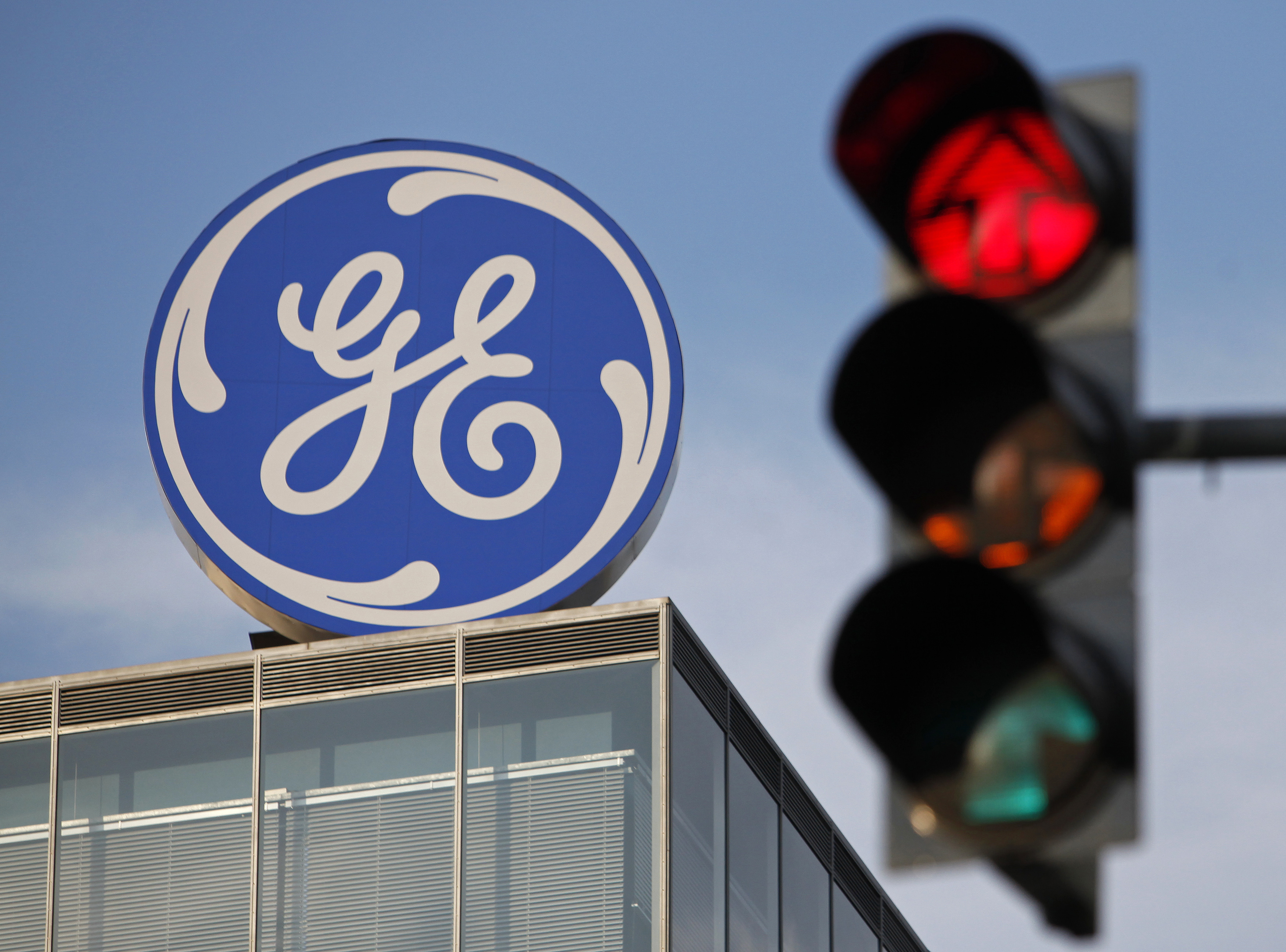The demise of GE Capital: Why Dodd-Frank isn't nearly tough enough
With real regulatory reform, more banks would be following GE's lead


The surprising news out of the business world is General Electric's decision to sell off its financial division over the next two years.
Under the tenure of former CEO Jack Welch, GE Capital swelled from a modest part of the 123-year-old conglomerate, aimed at supporting GE's other businesses, to a massive financial player in its own right. Now the plan is to sell off $275 billion of the financial behemoth's staggering $363 billion in assets to various buyers. In a testament to GE Capital's mammoth size, GE aims for its manufacturing and industrial arms to make up 90 percent of its earnings in 2018. Right now, they're 58 percent.
Tax considerations and big payouts to shareholders ($50 billion in stock buybacks!) clearly played a role in GE's thinking. But a desire to get out of being defined as a "systemically important financial institution" ("SIFI") was also apparently a big part of it. And that provides a window into how attempts to reform the financial system since 2008 are working — and how they're not.
The Week
Escape your echo chamber. Get the facts behind the news, plus analysis from multiple perspectives.

Sign up for The Week's Free Newsletters
From our morning news briefing to a weekly Good News Newsletter, get the best of The Week delivered directly to your inbox.
From our morning news briefing to a weekly Good News Newsletter, get the best of The Week delivered directly to your inbox.
The 2010 Dodd-Frank financial reform law is a massively complex beast with a lot of moving parts. But one aspect is that it assigned the Financial Stability Oversight Council (FSOC) the job of determining which financial institutions are so big and so interconnected that, if they were to go down, they could set off a domino effect, taking the rest of the financial world down with them, a la 2008. Those that cross the threshold get the SIFI designation. They face stricter domestic regulatory standards, and have to meet tougher international standards for capital requirements — i.e. how much of a money cushion they must have on hand to pay potential losses.
Actual banks like JPMorgan Chase are deemed SIFI if they posses assets over $50 billion. Thirty-three meet that threshold, and the eight largest ones are so big they face even tougher rules. The FSOC has somewhat more complicated standards for determining when a non-bank financial institution should be SIFI, but so far four of them have gotten the brand: MetLife, AIG, Prudential, and GE Capital.
What's especially striking is how huge these suckers are. GE Capital's $363 billion in assets may leave the $50 billion SIFI threshold in the dust, but JPMorgan Chase boasts a whopping $2 trillion. Add in the next five largest banks and you've got around $6.8 trillion.
So what you'd hope is that these other institutions would follow GE Capital's lead, and start dismantling themselves to get under the threshold. In an ideal world, the SIFI designation would be pointless, because there wouldn't be any institutions that could bring down the global system like that.
A free daily email with the biggest news stories of the day – and the best features from TheWeek.com
But that hasn't happened. Prudential raised a stink when it got the designation, and MetLife even sued to have it removed. But other than that, the banks and non-banks alike seem content to just eat the consequences of the SIFI brand and keep trucking.
A key factor here is probably that, as one part of a conglomerate, GE Capital can be divvied up without posing an existential threat to GE itself or its massive economic dominance. For JPMorgan Chase, MetLife, and the rest, that isn't so: finance is pretty much all they do. Because it has an "out" in that sense, GE's institutional willingness to put up with the inconveniences of the SIFI brand are probably just a lot lower.
Which suggests that one goal of future financial reform should be to make those inconveniences a whole lot worse.
Now, critics of Dodd-Frank have raised the complaint that having the SIFI designation at all is a bad idea; it implies that any institution with the label will be viewed by the government as "too big to fail," and will thus actually behave in a more risky fashion, assured of a bailout should its bets go bad.
That's not a crazy theory; but it remains a theory, and GE's interest in ending its SIFI designation doesn't exactly lend the idea credence. But one reason we keep getting bailouts is that policymakers panic, not knowing what else to do when massive financial institutions are on the verge of collapse. Dodd-Frank tries to remedy that problem with "resolution authority." That's a legal tool the law created which would allow the government to essentially take over an institution that's on the verge of collapse, temporarily finance it, then carve it up and sell it off. It would be a controlled demolition, ensuring the institution's demise doesn't threaten the rest of the system, while also ensuring management and the shareholders lose their jobs and investments, and thus pay a price for their folly.
When (not if) the next crisis hits, if the government uses resolution authority successfully, that could change the outlook of a lot of the SIFI banks and non-banks real quick. In that sense, bailouts may be dead already, but the market just hasn't learned it yet.
But just waiting around to test that idea isn't exactly an attractive plan either. Writing in National Affairs back in 2013, James Pethokoukis offered up three further proactive suggestions to get the SIFI banks to start downsizing. One, massively increase their required capital cushion, from the paltry 7 percent of total assets currently required (to be sure, an improvement over the pre-Dodd-Frank era!) to 30 percent or more. Two, put a cap on non-deposit liabilities — i.e. any activity that isn't traditional banking — perhaps in the range of 2 percent of GDP per institution, as suggested by former chief IMF economist Simon Johnson. Three, strengthen Dodd-Frank’s "Volcker Rule," so that any institution involved in traditional banking activities is completely banned from engaging in proprietary trading or from owning any sort of complicated financial security. As Pethokoukis admits, the Volcker Rule wouldn't have prevented the 2008 collapse, but then we don't know what form the next crisis will take.
The downside of Dodd-Frank is that it is enormously complex, with a massive trove of rules that have to be designed by regulators — a process which Wall Street is furiously trying to lobby and game. The virtue of Pethokoukis' suggestions is that, by contrast, they're big, dumb and simple. They don't require complex regulatory adjudication to enforce, and they simply lay down some hard lines for all financial firms to abide by. The portions of Dodd-Frank that meet the "big, dumb and simple" criteria have arguably been the most successful so far, and that path probably holds the most realistic promise for further reform.
Jeff Spross was the economics and business correspondent at TheWeek.com. He was previously a reporter at ThinkProgress.
-
 A fentanyl vaccine may be on the horizon
A fentanyl vaccine may be on the horizonUnder the radar Taking a serious jab at the opioid epidemic
-
 The 8 best comedy TV series of 2025
The 8 best comedy TV series of 2025the week recommends From quarterlife crises to Hollywood satires, these were the funniest shows of 2025
-
 Sudoku hard: December 16, 2025
Sudoku hard: December 16, 2025The daily hard sudoku puzzle from The Week
-
 Has Zohran Mamdani shown the Democrats how to win again?
Has Zohran Mamdani shown the Democrats how to win again?Today’s Big Question New York City mayoral election touted as victory for left-wing populists but moderate centrist wins elsewhere present more complex path for Democratic Party
-
 Millions turn out for anti-Trump ‘No Kings’ rallies
Millions turn out for anti-Trump ‘No Kings’ ralliesSpeed Read An estimated 7 million people participated, 2 million more than at the first ‘No Kings’ protest in June
-
 Ghislaine Maxwell: angling for a Trump pardon
Ghislaine Maxwell: angling for a Trump pardonTalking Point Convicted sex trafficker's testimony could shed new light on president's links to Jeffrey Epstein
-
 The last words and final moments of 40 presidents
The last words and final moments of 40 presidentsThe Explainer Some are eloquent quotes worthy of the holders of the highest office in the nation, and others... aren't
-
 The JFK files: the truth at last?
The JFK files: the truth at last?In The Spotlight More than 64,000 previously classified documents relating the 1963 assassination of John F. Kennedy have been released by the Trump administration
-
 'Seriously, not literally': how should the world take Donald Trump?
'Seriously, not literally': how should the world take Donald Trump?Today's big question White House rhetoric and reality look likely to become increasingly blurred
-
 Will Trump's 'madman' strategy pay off?
Will Trump's 'madman' strategy pay off?Today's Big Question Incoming US president likes to seem unpredictable but, this time round, world leaders could be wise to his playbook
-
 Democrats vs. Republicans: who are US billionaires backing?
Democrats vs. Republicans: who are US billionaires backing?The Explainer Younger tech titans join 'boys' club throwing money and support' behind President Trump, while older plutocrats quietly rebuke new administration
